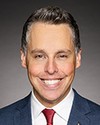Thank you. I appreciate the question, Mr. Chair.
As Tamara outlined in her comments, you have to start from the deficit we face in our infrastructure across the country. The reality is that there is no one solution to that level of deficit. It's going to take all the tools in the tool kit. There's certainly a place for traditional publicly funded and publicly financed infrastructure. We need that and we have it across our country with our public schools, highway networks and health care system. That will continue to be true. However, there's a class of infrastructure, to the member's question, that has some economics to it—some commercial element—but the private sector can't and won't do it alone, often because of risk or uncertainty.
Let me pick one example we often talk about, and one Mr. Jaswal mentioned in his opening remarks: electric-vehicle charging. There are entrepreneurs across this country looking to build out EV-charging networks, and that's great. Those entrepreneurs also look at a very uncertain world. They look at uncertainty around how quickly adoption will take place, what the supply chains for EV will look like, and how quickly people will get over their range anxiety and make that conversion. If you started a business, Mr. Chair, and you were going to build out a network of EV chargers, you would have to be very cautious. You'd build out a few chargers next year and a few the year after that. You would slowly, in a commercial way, do that.
The leverage the member asked about.... What we're trying to do is accelerate that build-out by providing a loan to a private sector builder of EV charging that allows them to go much faster than they would otherwise. It says to them, “You will pay us back as your business performs.” If it takes longer for adoption to happen, our loan terms will actually defer. It's very different from what a bank would do, or from the kind of loan they would find in the market. That's what we can do with public moneys in a loan.
Just to be clear, everything the CIB does is a loan or an equity investment. We don't have a single dollar of granting. However, what we can do with taxpayers' money in a loan structure is be flexible—take on long time horizons and uncertainty.
That's how we're getting the leverage the member asked about.



